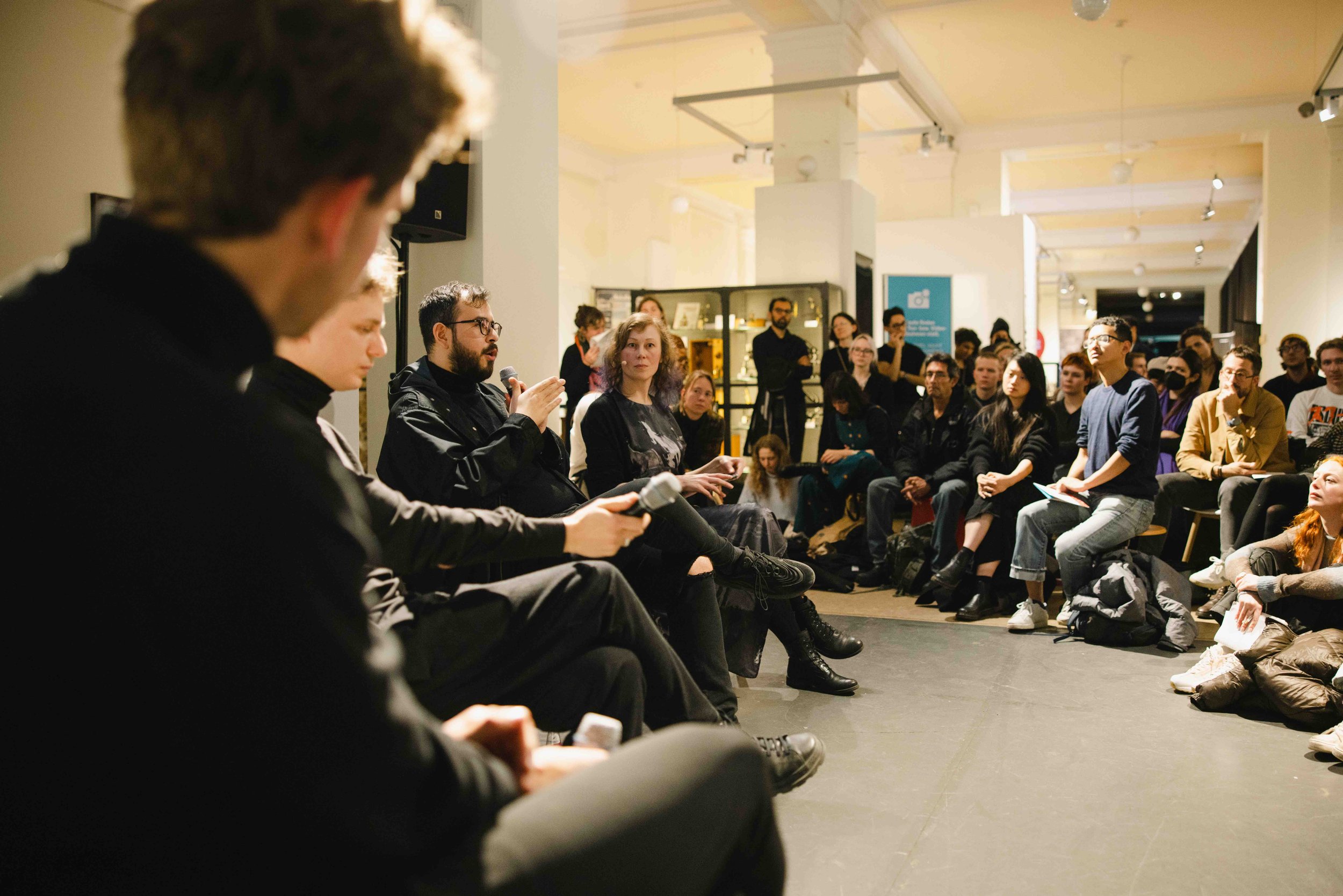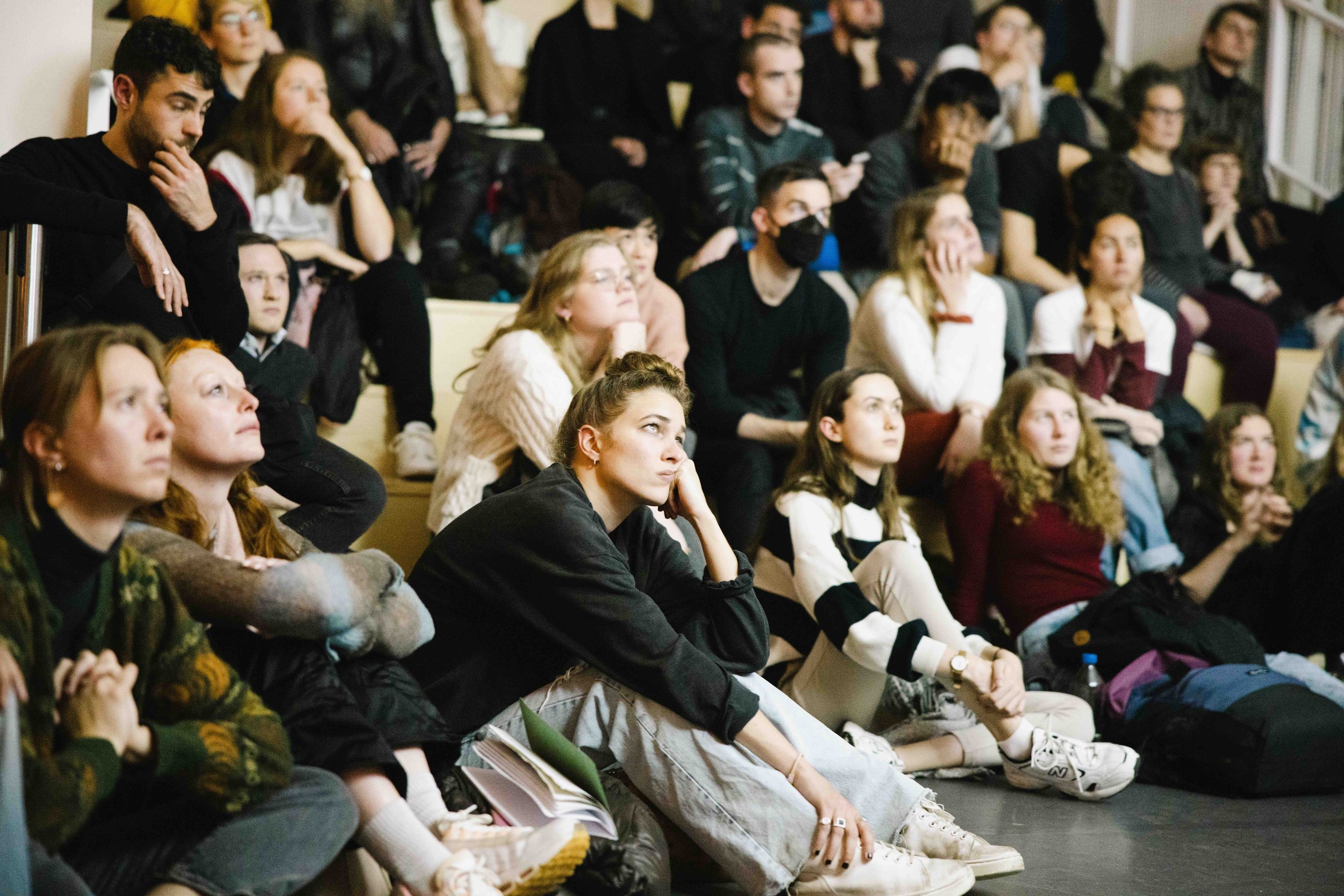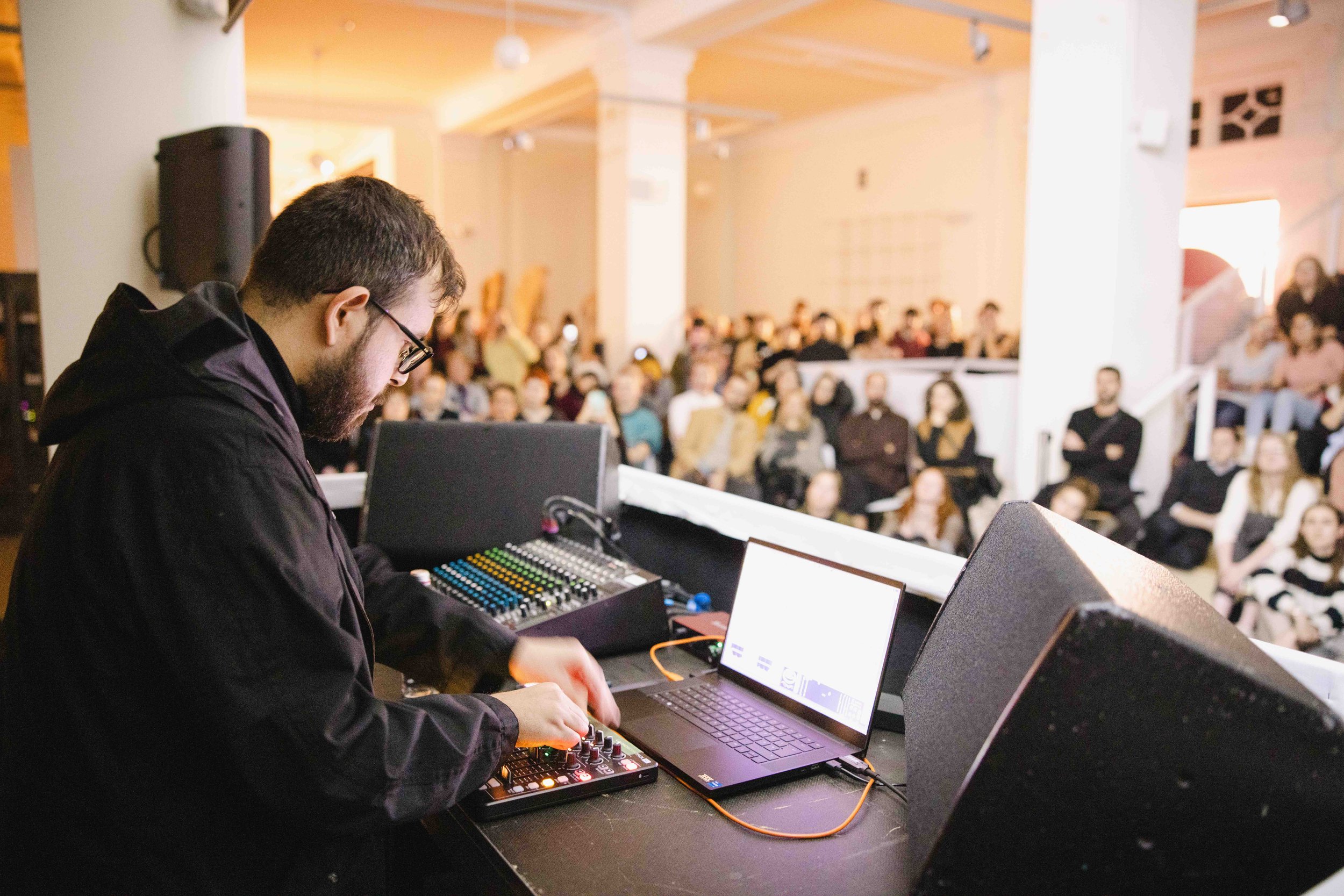The changing nature of live electronic music
We received a lot of interest in our "Machined Music" roundtable and performance at Berlin Science Week on Nov. 4. Setting up in the "Collaborative Field" room at the Museum für Naturkunde Berlin, we were overwhelmed with the turn out, which we estimated at about 130 people! The majority of the audience were students and other young people interested in AI techniques given their increasing utility through programs such as Artbreeder and DALL·E 2. Many were led to our talk then through a curiosity about the impact AI may, or is, having in electronic music and the audio domain.
Led by Claudia Schnugg the panel focussed on the sonic arts practices and research of the three guests Moisés Horta Valenzuela, Federico Visi, and Tom Burgert. In particular, we were treated to insights about how aesthetic and musical considerations lead technical decisions in the use of Machine Learning and automation. Here, the theme of overfitting was discussed, or when the composer has unknowingly extracted some of the residual variation (the `noise') from a training data set rather than the model's actual underlying structure. This type of dimensionality reduction from the feature space of the training data to the latent space of the learning model is particularly interesting to electronic music composers and performers given it is where unexpected events (i.e. `errors') may arise, which can be exploited for artistic ends.
There was also a fascinating discussion about data and bias, and how datasets themselves can be understood as cultural objects and thus reflections that tell us something about the current state of society. This also led to some reflections on agency and performance and how parameters for realtime manipulation are chosen and utilized.
The panel discussion was followed by a mesmerising audio-visual performance by Horta Valenzuela. His work OÍR is a generative neural network as meta-DJ that has learned its craft from the many DJ sets found in the HÖR Berlin archive. The visual element of Valenzuela's performance consisted of a large video projection of synthesized ghostly DJs appearing, disappearing and morphing into each other as the music emerged from both haunting and and at times relentless electronic beats of these sets. Valenzuela was a masterful manipulator of the realtime OÍR tool, using his laptop and mixing desk like a musical instrument, and in doing so, providing the listener with a well-considered variety of moods, textures and recognizable musical gestures amassed from the core features of the HÖR archive.
© Berlin Science Week/Ole Spata
© Berlin Science Week/Ole Spata
© Berlin Science Week/Ole Spata



